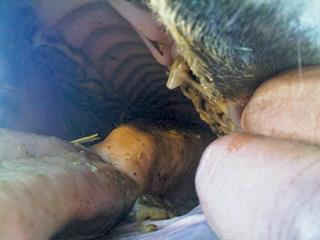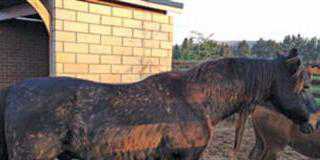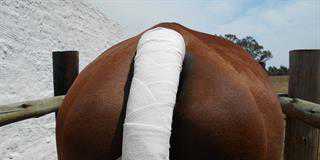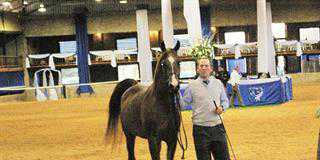
It never ceases to amaze me when I see the shock on a horse owner’s face when I ask: “When last did your horse see the dentist?” Like humans, your horse needs to see the dentist every six months. We have covered this before, but a ‘refresher’ is a good idea, as this is an important part of equine care.
A horse has 12 front teeth (six incisors on the top and bottom jaw respectively). Like a human, it has milk teeth and thereafter permanent teeth. The milk tooth is small and white with a short fang and a very distinct neck. Permanent teeth are yellowish in colour. They are bigger and have no neck.
The change from milk teeth to permanent teeth occurs at specific ages. At one year, a horse has the sparkle of youth in its eye and its body is still covered in a soft coat. Its tail is fluffy and its 12 milk teeth are unworn. At two, the fluffy tail is gone, replaced by smooth tail hairs.
The horse’s white milk teeth are now looking a little more worn. At three, the two centre teeth of each jaw have been replaced by permanent teeth, which are larger and show sharp edges. At four years, two more white milk teeth have been replaced. In the male horse, a tush tooth will appear behind the incisor teeth (some dominant mares also have tush teeth).
Wolf teeth
At five, the corner milk teeth have been lost and new shell-like teeth have appeared. Some horses will now show wolf teeth, which are premolars and not canines as the name may suggest. From 13% to 32% of horses are born with wolf teeth, with most having only one or two. There is no difference in occurrence between male and female horses and these teeth are more likely to be found on the upper jaw.
Wolf teeth can interfere with the horse’s bit contact and may make it difficult to rasp the second premolar. Wolf teeth also help to explain rearing or bucking. They are often removed.
Galvayne’s groove
At six, the horse now has a ‘full mouth’ and the corner teeth have lost their shell-like appearance. At seven, a hook appears on the top corner tooth. (At 13 a similar hook shows itself, thus often confusing a person inexperienced in aging horses.) At eight the hook has disappeared. The top of the teeth (the tables) show wear, and the black hollow centres have disappeared. The Galvayne’s groove occurs on the upper corner incisor, producing a vertical line.
This is helpful in approximating the age of older horses. It first appears when the animal is 10 years old, reaches halfway down the tooth when it is 15, and is all the way down at 20. It then begins to disappear, and is usually halfway gone by 25, and completely gone by 30.
Signs of possible dental problems:
- Difficulty in eating, not finishing food
- Dull coat, weight loss
- Quidding (dropping partially chewed food), chewing with the mouth open, turning head to the side while chewing
- Excessive salivation while eating, blood in saliva
- Foul smell from mouth or nose
- Discharge from one nostril
- Undigested feed in manure
- Colic
- Facial swelling
- Head tossing under saddle, difficulty in picking up the canter or in performing flying changes
- Tilting of the head while riding or difficulty in bending
- Rearing or bucking













